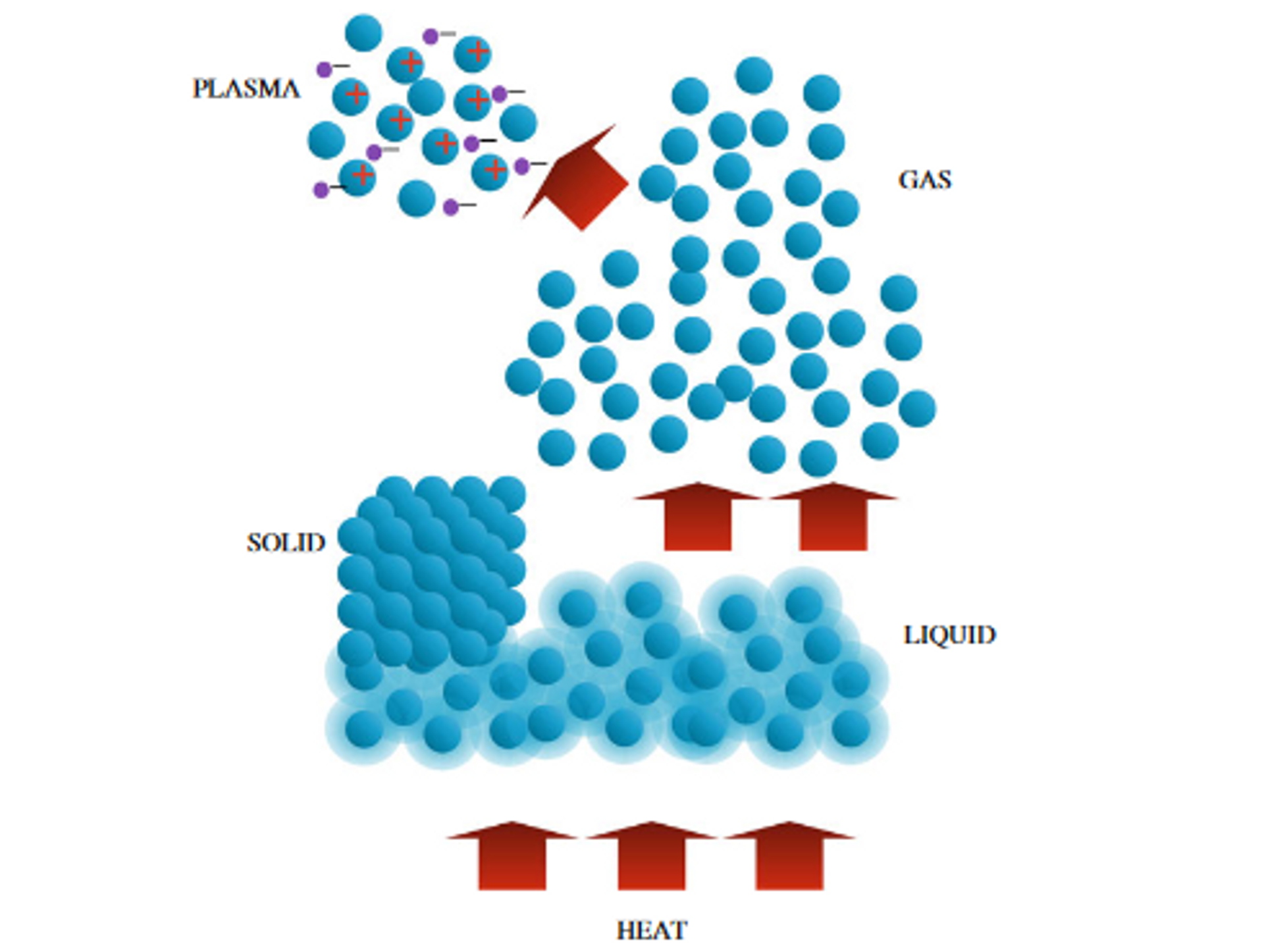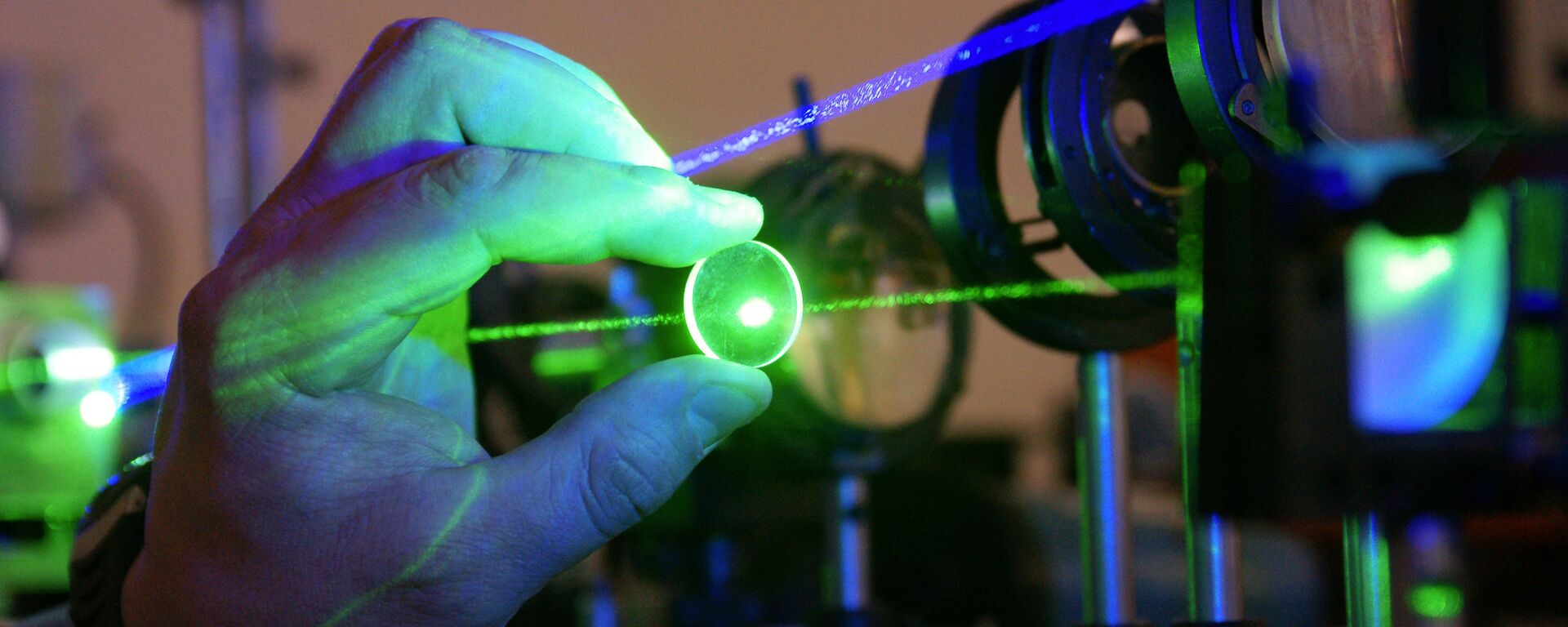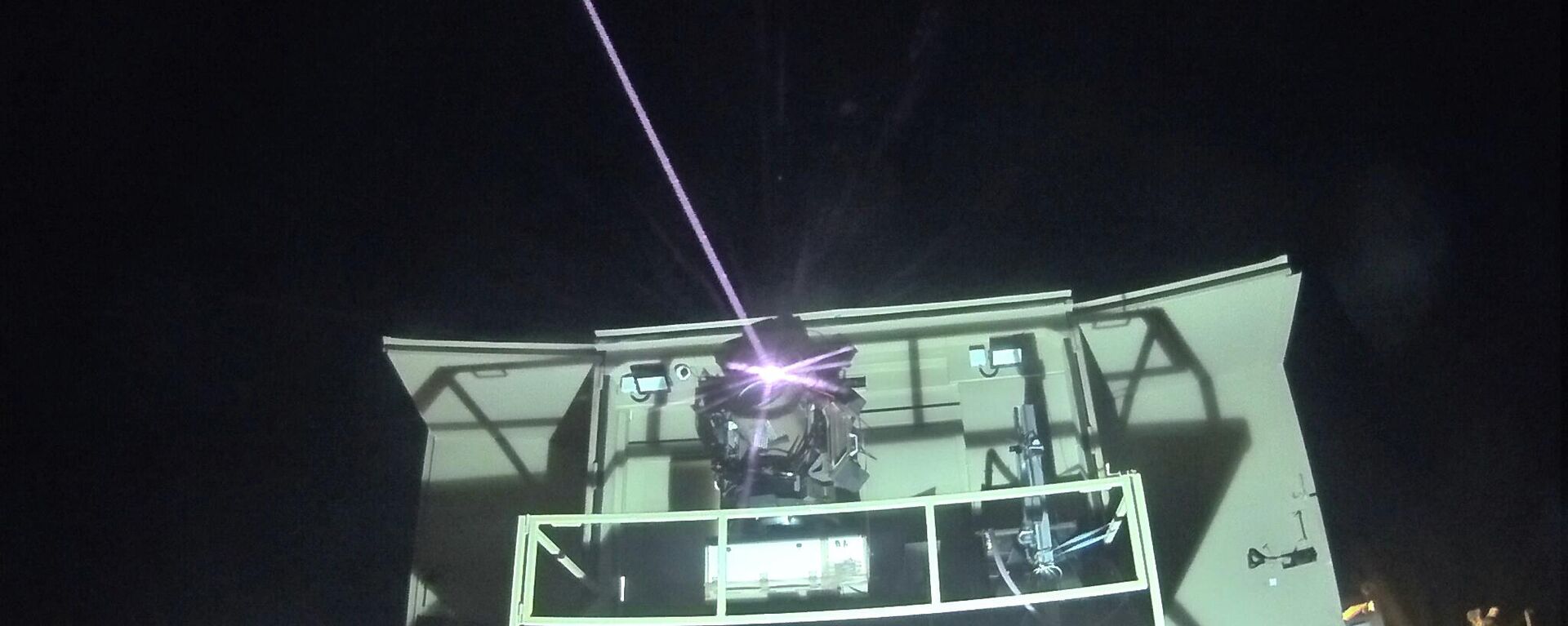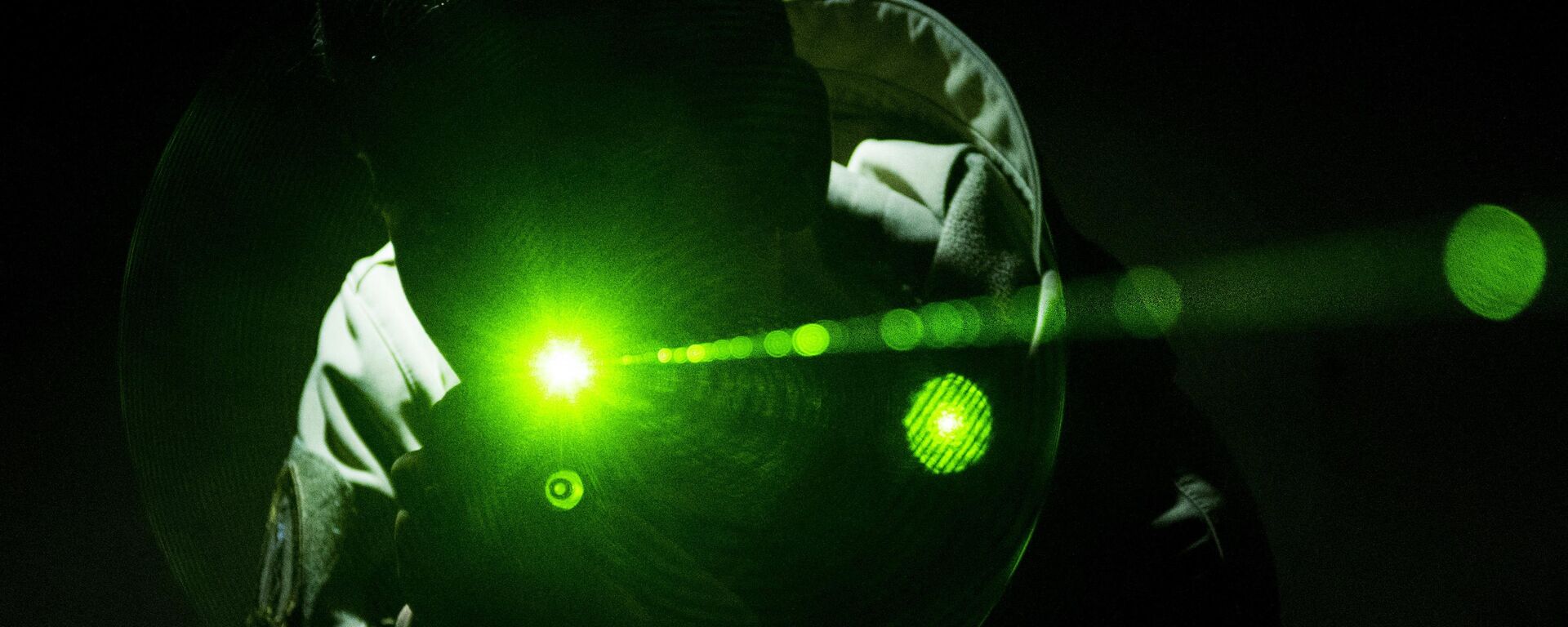What are Plasma Weapons' Potential in Modern Warfare?

© Photo : Twitter / @Israel_MOD
Subscribe
As plasma technology has evolved, so has its military uses. Warfare applications encompass plasma shields, intended to deflect conventional ballistic weapons, advanced plasma beams and directed energy weapons.
Plasma technology, often called the fourth state of matter, stands at the forefront of scientific innovation and plays a crucial role in modern warfare.
Plasma-based weapons — once a staple of science fiction — harness plasma, a gas-like mass of highly-energised free-floating ions and electrons.
Research in plasma has been ongoing for several decades, starting in the early 20th century. The initial focus was on understanding this distinctive state of matter, scientifically and in the context of astrophysics. By the latter half of the century, the potential military applications of plasma began to come to light.
In the military sphere, plasma technology is valued for its versatility and immense power. Early research aimed at harnessing plasma for nuclear fusion, a potential clean and efficient energy source, which held significant implications for energy-intensive military operations.
Sputnik delves into how plasma transitioned from a mere fictional concept to an integral element in contemporary military strategy.
Plasma Fundamentals
Plasma is beyond the common states of matter — solid, liquid, and gas. To illustrate phenomenon, we may use the water as a model example.
Water, typically a liquid at room temperature and normal air pressure, transforms into ice, its solid form, when the temperature drops below freezing point (0°C). Conversely, heating water to its boiling point (100°C) changes it to steam, the gas phase of water. Furthermore, if steam is heated well beyond 100°C, it's possible for the molecular structure of water to split into individual hydrogen and oxygen atoms. With further heating, they go through a process called ionization, when atoms gain or lose electrons — tiny, negatively charged particles that orbit the nucleus of an atom — forming plasma.

How Plasma is Created.
© Photo : Elements of Plasma Technology by Chiow San Wong and Rattachat Mongkolnavin
Plasma-Based Weapon Systems
The marriage of science and weapons design has sped up the integration of advanced technologies, improving defense capabilities and affecting tactical operations. applying plasma technology to military weapon systems is a ground-breaking advance in warfare capabilities.
Plasma-directed energy weapons generate plasma by ionizing gas, which requires significant energy. This plasma conducts electricity and transfers energy, such as a laser or particle beam, towards a target. On impact, the plasma causes damage through heat, kinetic energy, or the carried high-energy charge, leading to thermal (burns, melting) or mechanical effects (impact, shockwaves). However, controlling and directing plasma over long distances is difficult due to its tendency to disperse, and needs advanced focusing and control mechanisms.
Plasma Railguns represent an advanced form of railgun technology where plasma is employed to boost the acceleration of a projectile. This use of plasma significantly increases the speed and energy imparted to the projectile, enhancing the overall efficiency of the railgun.
Plasma cannons, or electrothermal accelerators, are experimental guns that shoot projectiles using plasma. Plasma is a hot, electrically charged gas. Instead of using traditional gunpowder or other chemical substances to fire bullets, this weapon uses a plasma burst. This plasma is created between two electrodes at the breach end of the gun's barrel, generating a huge pressure spike that accelerates the projectile. It is like a futuristic gun that uses lightning-like energy to fire instead of gunpowder.
Opportunities for Plasma Technology in Warfare
Plasma technology presents several opportunities for modern warfare, offering advancements in various areas.
Plasma Sheath Effect
In military technology, plasma has evolved from a challenge to an asset in aircraft design. High-speed aircraft generate intense heat, creating a "plasma cocoon" during hypersonic flight. This requires aircraft to be designed for extreme mechanical and thermal stresses, with advanced materials science, design and aerodynamics.
The plasma layer disrupts radio signals, complicating communication and navigation. Modern hypersonic aircraft, however, are increasingly equipped with high-performance autonomous systems to overcome these challenges.
The plasma cocoon also makes aircraft more visible to radar and infrared surveillance, but intercepting them remains difficult due to their high speed.
Speculation is rife about leading nations developing plasma generators to decrease aircraft visibility, but details about these projects are scarce and unconfirmed.
Stealth Technology
Plasma can be used to improve stealth technology. By generating a plasma field around a vehicle, such as an aircraft or a ship, its radar cross-section can be significantly reduced. This makes it harder for enemy radar systems to detect and track the vehicle, providing a significant tactical advantage.
Communication and Jamming Systems
Plasma antennas offer an innovative approach to high-frequency communication and electronic warfare. These antennas can be turned on and off rapidly, providing dynamic and adaptable communication systems. Furthermore, plasma can be used for jamming enemy communications and radar systems, disrupting their operational capabilities.
Missile Defense
Plasma-based technology could enhance missile defense systems. By using plasma to create a barrier or to directly interact with incoming projectiles, these systems could potentially neutralize or divert threats, offering a new layer of defense against ballistic and cruise missiles.
Energy and Propulsion
Plasma technology could aso be used to develop new engines for military vehicles, including aircraft and spacecraft, which could offer higher speeds and greater fuel efficiency compared to traditional propulsion methods.
Material Science and Armor
Plasma-enhanced manufacturing cold lead to the development of new materials with enhanced properties, like greater strength or heat resistance. This has implications for armor, both personal and for vehicles, providing better protection while potentially reducing weight.
Wound Healing and Medical Applications
In the field of military medicine, plasma technology can be used for sterilization and promoting wound healing, reducing the risk of infection in battlefield injuries.
Sensor and Detection Systems
Plasma-based sensors can be more sensitive and faster than traditional ones, improving the capability to detect threats like chemical or biological agents.
Why is Plasma Generation so Difficult?
Creating and maintaining plasma hinges on precisely balancing factors like temperature, pressure, and electromagnetic influences. The primary obstacle is preserving the plasma's stability without it dissipating or causing damage to its containment system.
In high-stakes applications such as plasma weaponry, advanced manipulation of electric and magnetic fields is crucial for precise plasma control, efficiency and safety. Below is a guide to principles for creating plasma:
Gas ionization entails adding energy to a gas, which can be done by heating it, passing an electrical current through it or using electromagnetic waves. The energy added must be powerful enough to break the hold on the electrons in the gas's atoms. This frees the electrons and creates a mix of free electrons and ions (atoms possessing an electric charge).
Plasma Generation Methods involves imparting enough energy to a gas to transform its atoms into charged particles. This can be achieved through the following means:
Thermal ionization: Heating a gas to the extreme temperatures found in stars, causes atoms to collide with enough force to convert them into ions. This method is used in fusion reactors, where the goal is to achieve conditions similar to those in the sun.
Electrical Ionization: When an electrical current is passed through a gas that ionizes its atoms. This is the principal behind neon lights and plasma-screen televisions.
Laser Induced: Using intense laser beams to rapidly heat a small region of gas, creating plasma. This method is often used in scientific research and material processing.
Plasma Control involves managing the behavior and stability of plasma in the following ways:
Magnetic Fields: Plasma is highly responsive to magnetic fields due to its charged nature. Magnetic confinement is used in fusion reactors, like 'tokamaks', to contain and control the plasma, preventing it from coming into contact with material walls.
Electric Fields: Electric fields can be used to accelerate and direct plasma, as seen in some types of propulsion systems and plasma cutting tools.
Pressure and Temperature Control: Maintaining the appropriate pressure and temperature is crucial for the stability of plasma. This involves sophisticated control systems, especially in research and industrial applications.
Understanding and applying these principles is essential in diverse areas, including industrial processes, advanced physics research, and, notably, creating plasma-driven technologies for modern warfare.
Problems With Plasma
Plasma, with its high temperature and bright glow, is found naturally in stars, interstellar space and phenomena like lightning. It can also be artificially generated in various devices, ranging from household lamps to thermonuclear reactors.
Historically, plasma has had military applications. Incendiary systems, from ancient flaming arrows to modern flamethrowers, produce a flame that is essentially a low-temperature plasma. The flash from an explosive detonation is caused by ionized gas.
Despite being less intense than its high-temperature plasma, low-temperature plasma possesses considerable energy. It readily transfers this energy to nearby materials, igniting or detonating and damaging the target.
The most dramatic military use of plasma is in nuclear and thermonuclear explosions. These explosions, resulting from nuclear fission or fusion, release immense energy that ionizes surrounding substances, forming a plasma cloud. This cloud emits intense light radiation, a primary damaging factor in nuclear explosions, capable of igniting objects and causing extensive damage even at significant distances from the blast.
Non-lethal Applications of Plasma in Military Technology
Less fatal plasma uses in defense technology are evolving, primarily focused on crowd control and area denial. Here is a more detailed look into the potential non-lethal uses of plasma technology in defense:
1.
Plasma Shields for Crowd Control: Plasma can create dazzling displays or barriers that are visually intimidating but non-lethal. These 'plasma shields' can serve as a means to control large crowds or disperse riots without causing harm. The bright, visible nature of plasma makes it an effective tool for signaling or creating a psychological deterrent.2.
Directed Energy Systems: Plasma-based directed energy systems can be designed to temporarily incapacitate electronic devices in a specific area, a concept known as electromagnetic pulse (EMP) effects. This can be used for disabling vehicles or communication devices in a non-lethal manner, which is especially useful in urban conflicts where minimizing collateral damage is crucial.3.
Plasma Acoustic Shields: By manipulating plasma to create controlled acoustic effects, defense systems can generate loud, disorienting sounds or verbal warnings over long distances. This application can be used for crowd control, to disperse gatherings, or to communicate with potentially hostile groups from a safe distance.4.
Plasma Illumination and Marking: Plasma technology can be used to illuminate areas or mark targets without the use of traditional flares or lighting systems. This application can be beneficial in search and rescue operations or where non-lethal marking of individuals or locations is required.5.
Heat Ray Applications: While not directly a plasma technology, related developments involve using intense heat (similar to the sensation produced by plasma) to disperse crowds by creating a burning sensation on the skin without causing permanent damage. This technology works on the principle of directed energy, creating an uncomfortable but non-lethal effect.6.
Training and Simulation: Plasma technology can be used in training environments to simulate weapon effects or create realistic training scenarios without the risk of live ammunition. This application is particularly relevant for military and law enforcement training programs.7.
Non-Lethal Projectile Disruption: Plasma can disrupt or turn off incoming non-lethal projectiles, like drones or other surveillance devices, using targeted electromagnetic pulses. This application would be especially useful in protecting sensitive areas from surveillance or intrusion.




